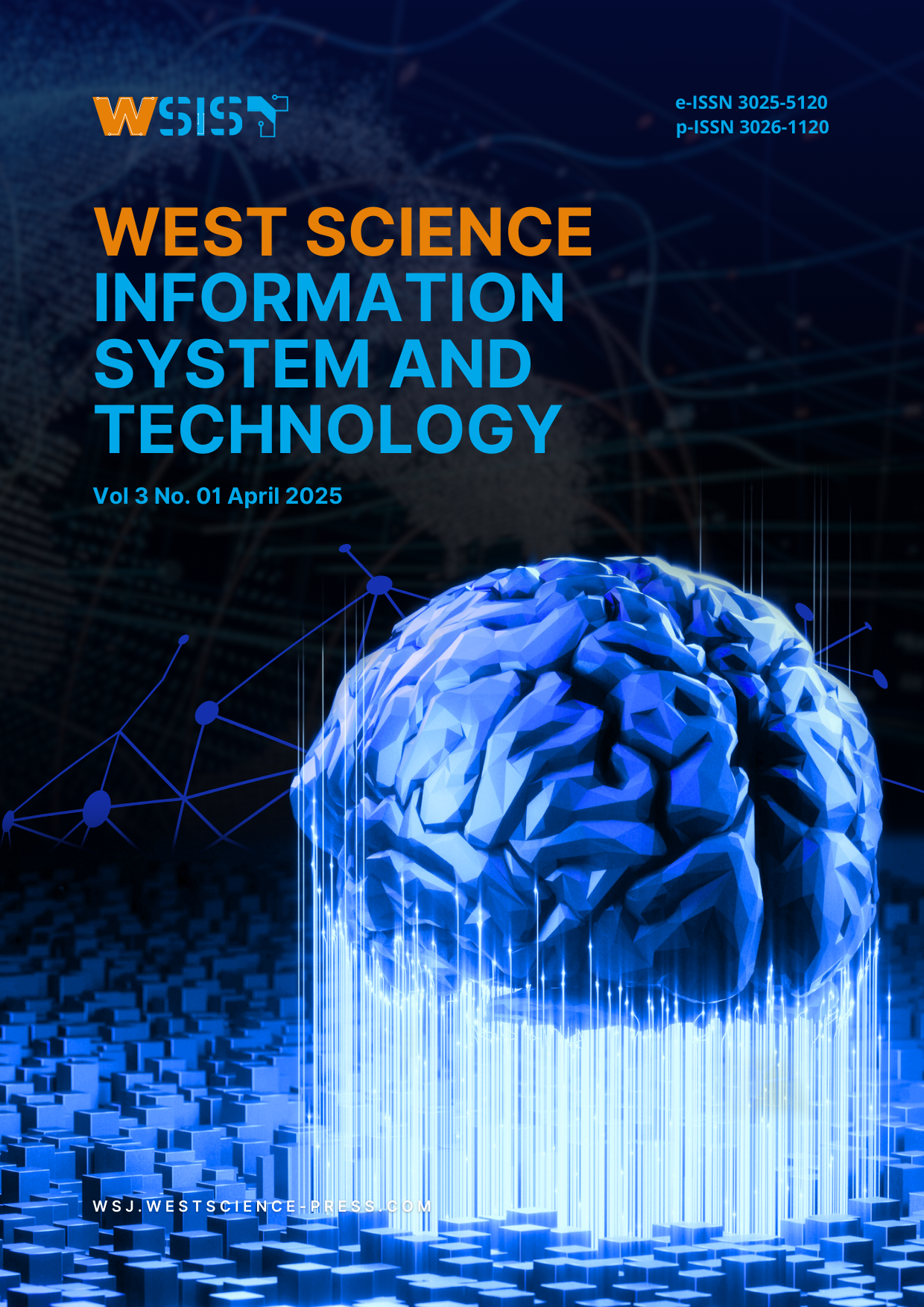Smart Village Initiative for Drug-Free Communities: A Technology-Based Approach in West Java
DOI:
https://doi.org/10.58812/wsist.v3i01.1821Keywords:
Smart Village Initiative, Drug-Free Communities, Technological Interventions, Community EngagementAbstract
The Smart Village Initiative in West Java leverages technology to combat drug-related issues and foster drug-free communities. This study employs a quantitative analysis with 150 respondents using a Likert scale (1–5), analyzed via Structural Equation Modeling-Partial Least Squares (SEM-PLS). The findings reveal that technological interventions significantly enhance drug prevention outcomes and community engagement, with community engagement mediating the relationship between technology and outcomes. The results demonstrate the initiative's effectiveness in promoting awareness, participation, and safety within communities. These findings underscore the potential of integrating technology and community-driven approaches to address complex social issues, offering a scalable model for other regions. Future research should explore long-term impacts and adaptations for diverse contexts.
References
[1] S. Ngaisah, W. D. Widoyoko, D. A. Rahmawati, and Y. A. Prayogi, “Social Engineering and Legal Framework for Drug Rehabilitation : A Comparative Analysis of National Legislation in Indonesia,” vol. 02, no. 11, pp. 1921–1930, 2024.
[2] K. S. Utomo and M. Barthos, “Efforts for Reforming the Criminal Justice System in Implementing Rehabilitation Sentences for Drug Abusers,” J. Ekon. Teknol. dan Bisnis, vol. 3, no. 12, pp. 1827–1836, 2024.
[3] C. Christiana, A. J. S. Runturambi, and B. J. Mamoto, “Ketahanan Keluarga Dan Pencegahan Kekambuhan Adiksi Narkotika Pada Remaja,” EMPATI J. Ilmu Kesejaht. Sos., vol. 12, no. 1, pp. 44–54, 2023.
[4] Z. R. Hasrian, W. Purbaningsih, and S. A. D. Trusda, “Gambaran Penatalaksanaan dan Karakteristik Pasien Penyalahgunaan Narkoba di Rumah Sakit Ketergantungan Obat Jakarta Periode 2017-2021,” in Bandung Conference Series: Medical Science, 2024.
[5] J. D. Gordon and D. D. Gordon, “Drug abuse in Indonesia: An increasing problem during the economic crisis,” dalam Indones. Cris. A Hum. Dev. Perspect. ed. A. Ananta, ISEAS Press. Singapore, h, pp. 362–381, 2003.
[6] A. F. Aritenang et al., “Digital Transformation for Rural Areas and Smart Villages,” Policy Br., 2022.
[7] A. H. A. Sulthon et al., “Desa Saradan sebagai Pilot Project Konsep Pilar Smart Village dengan Mengembangkan Transformasi Teknologi untuk Pemberdayaan Masyarakat yang Inklusif dan Berkelanjutan,” J. Pengabdi. Masy. Bangsa, vol. 2, no. 1, pp. 90–102, 2024.
[8] W. Agustiono, “Smart villages in Indonesia in the light of the literature review,” in 2022 International Conference on ICT for Smart Society (ICISS), IEEE, 2022, pp. 1–5.
[9] M. K. Prabowo, “Pengembangan Smart Village Desa Jatibarang Berbasis Aplikasi Digital Untuk Layanan Masyarakat Yang Optimal,” Diplomasi J. Demokrasi, Pemerintah. dan Pemberdaya. Masy., vol. 1, no. 1, pp. 11–25, 2023.
[10] S. Purwatiningsih, “Penyalahgunaan narkoba di Indonesia,” Populasi, vol. 12, no. 1, pp. 37–54, 2001.
[11] W. Noviana and F. N. Isti’adah, “Gap Strategi Pencegahan Penyalahgunaan Obat: Studi Kasus Wilayah yang Minim Peran BNN dan BK,” J. Bintang Pendidik. Indones., vol. 3, no. 1, pp. 180–190, 2025.
[12] A. Arifin, I. Widianingsih, and H. Nurasa, “An Integrated Public–Private Partnership System for Covering Narcotics Addiction Treatment Centre: a Case Study of Anti–Narcotics Zones in Indonesia,” in International Conference on Democratisation in Southeast Asia (ICDeSA 2019), Atlantis Press, 2019, pp. 181–186.
[13] L. Manurung, “The Impact of Drug Abuse on Families and Society (Literature Review),” MSJ Major. Sci. J., vol. 2, no. 2, pp. 239–244, 2024.
[14] M. J. Jesuraj, “Impact of substance abuse on families,” Rajagiri J. Soc. Dev., vol. 4, no. 2, pp. 18–23, 2012.
[15] E. Kersey, L. J. O’Neal, A. Michael, B. Pierre, T. Nesbit, and L. Forthun, “Substance Use and Rural Populations: FCS3379/FY1518, 2/2023,” EDIS, vol. 2023, no. 1, 2023.
[16] S. Phillips, “Community-based approaches to drug abuse issues: some lessons learned and future implications.,” Youth Stud. Aust., vol. 19, no. 3, pp. 39–43, 2000.
[17] K. U. Katas, E. I. Nwankwo, G. T. Igwama, J. A. Olaboye, and E. C. Anyanwu, “Community-based approaches to combatting substance abuse among youth: A case study of urban and rural programs,” Int. J. Appl. Res. Soc. Sci., vol. 5, no. 10, 2023.
[18] P. Machethe, E. Obioha, and J. Mofokeng, “Community-based initiatives in preventing and combatting drug abuse in a South African township,” Int. J. Res. Bus. Soc. Sci. (2147-4478), 11, 2022.
[19] C. C. Maha, T. O. Kolawole, and S. Abdul, “Innovative community-based strategies to combat adolescent substance use in urban areas of the US and Africa,” Int. J. Appl. Res. Soc. Sci., vol. 6, no. 6, pp. 1048–1067, 2024.
[20] A. M. N. Widjaja, M. H. Sanjaya, R. Fitriati, F. W. Fitriana, and A. B. Keloko, “Digital Health Technologies in Improving Access to Care for Underserved Populations,” J. Acad. Sci., vol. 1, no. 6, pp. 738–747, 2024.
[21] A. H. Fambeu, “Do information and communication technologies (ICTs) make Africans happy?,” Can. J. Dev. Stud. Can. d’études du développement, vol. 44, no. 4, pp. 629–644, 2023.
[22] S. E. Barrett, M. O. Ochapa, and T. Warren, “Digital technology in community engagement: Impacts and implications,” J. Health Care Poor Underserved, vol. 34, no. 1, pp. 425–430, 2023.
[23] M. Masudi and B. A. Hasin, “Utilizing Social Media for Preventing Substance Abuse,” Jami Sci. Res. Q. J., vol. 8, no. 3, pp. 93–112, 2023.
[24] K. Bosworth, “Application of computer technology to drug abuse prevention,” in Handbook of drug abuse prevention, Springer, 2006, pp. 629–648.
[25] K. B. Singh, N. Sengar, D. Das, and S. C. Misra, “Village 5.0: Enabling technologies and its applications in development of smart village,” in 2022 IEEE International Symposium on Smart Electronic Systems (iSES), IEEE, 2022, pp. 556–561.
[26] A. Degada, H. Thapliyal, and S. P. Mohanty, “Smart village: An iot based digital transformation,” in 2021 IEEE 7th World Forum on Internet of Things (WF-IoT), IEEE, 2021, pp. 459–463.
[27] V. Emerllahu and D. Bogataj, “Smart Villages as infrastructure of rural areas: Literature review and research agenda,” IFAC-PapersOnLine, vol. 58, no. 3, pp. 268–273, 2024.
[28] S. Aisyah, H. Widyaningsih, I. Harsono, D. Anurogo, and S. Andarmoyo, “The Influence of Economic Factors, Access to Health Services, and Social Support on Drug Abuse Prevention and Treatment Efforts in Urban Communities in East Java,” West Sci. Soc. Humanit. Stud., vol. 2, no. 1, pp. 86–95, 2024.
[29] E. D. Perper, “A descriptive study of program implementation among a group of high achieving coalitions in the drug-free communities support program.” University of Maryland, College Park, 2015.
[30] J. Cage, D. C. Coles, H. A. McGinnis, S. Yoon, and B. E. Pitts, “Validating the factor structure of the drug free schools and communities scale for child welfare involved youth,” J. Public Child Welf., vol. 16, no. 1, pp. 95–105, 2022.
Downloads
Published
Issue
Section
License
Copyright (c) 2025 Ismail Ismail, Felecia Felecia, Anisa Kurniatul Azizah, Diana Rahmawati

This work is licensed under a Creative Commons Attribution-ShareAlike 4.0 International License.






















 Instagram
Instagram 